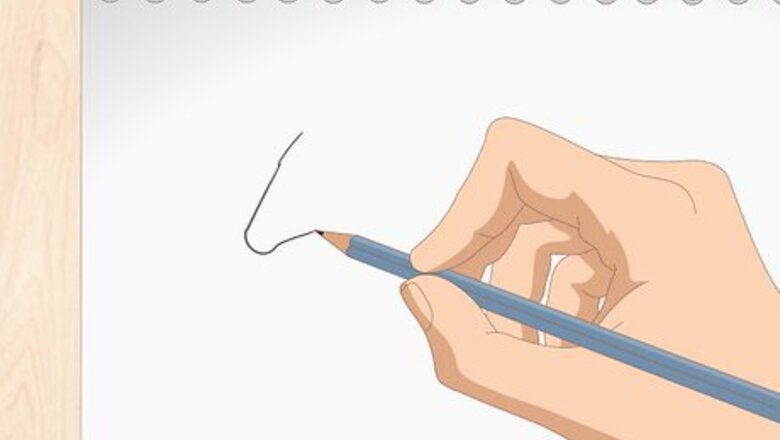
views
Drawing the Head and Neck
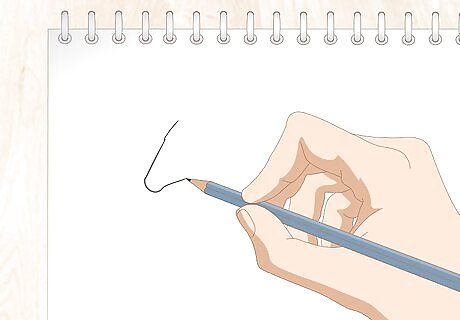
Create a diagonal “U” shape with 1 flat edge for the snout. Center the U-shape on the left one-third of a piece of paper. Make the snout as large as you want it to be depending on the desired size of your horse. Angle the U-shape so that it is turned at about 45 degrees with the open edge of the U-shape facing upwards.Tip: Try tracing around your index finger to get a good curve at the end of the U-shape.
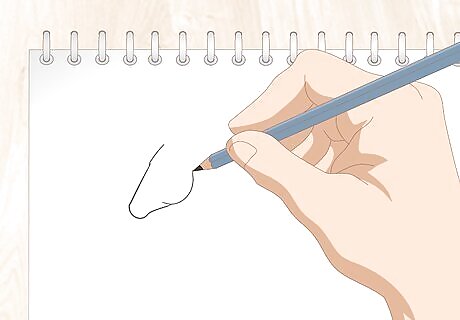
Add a curved line extending from the bottom of the snout for the jaw. This will be the horse’s jaw. Start the line at the end of the U-shape and curve it upwards. Make the line about half the size of the snout. Imagine you’re drawing a wide, shallow bowl that’s tilted at the same angle as the U-shape.
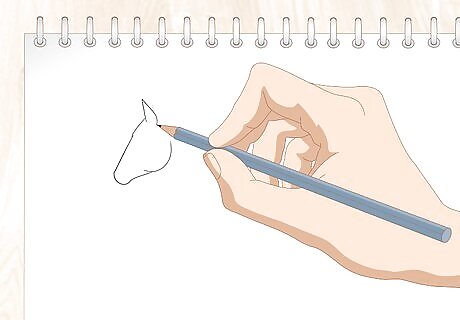
Draw a small triangle on top of the head for the front ear. This will be the horse’s front ear, so make it about one-fourth of the size of the snout and jaw. Start the triangle at the top edge of the U-shape and then draw a 45-degree angle for the point. End the triangle at the same level as the beginning point. Leave the bottom edge of the triangle open. Make sure that the top point of the triangle is pointing up towards the top edge of the paper. Another option is to make ears that are diamond-shaped. Draw diamonds extending up from the top of the horse’s head, but leave the pointed edges off the base of the ears.
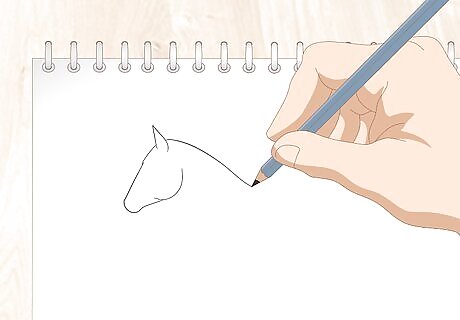
Extend a curved line down from the base of the triangle to make the neck. Make this line about twice the size of the snout. Press the pencil against the paper at the beck edge of the triangle you just drew. Then, extend a slightly curved line down at a 45-degree angle to the bottom of the page. Make this line about twice as long as the horse’s snout.
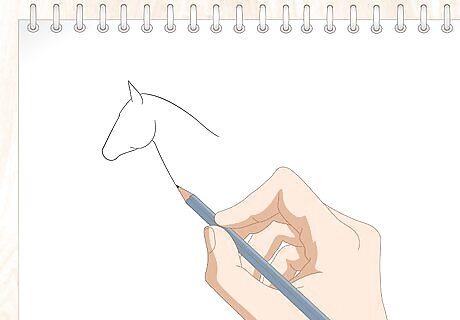
Make a straight line going down from the center of the jaw. Next, draw the front of the horse’s neck. Create a line that runs parallel to the line you just drew for the back of the neck. Include a gentle curve in towards the horse’s body at the bottom of the line. Make this line about twice as long as the back of the horse’s neck.
Forming the Body
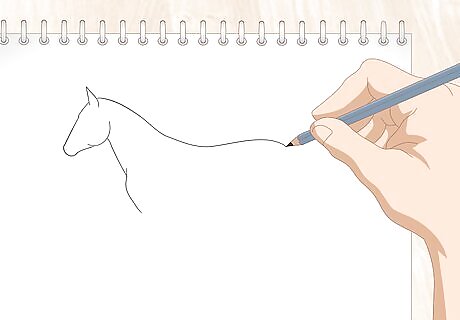
Draw a line extending from the base of the neck for the horse's back. Ensure that the line is about twice as long as the horse’s neck, and then draw a line that curves down at the end of it. This is the horse’s back and rump. It’s okay if there’s a gentle curve in the line that makes up the horse’s back. It doesn’t have to be perfectly straight.
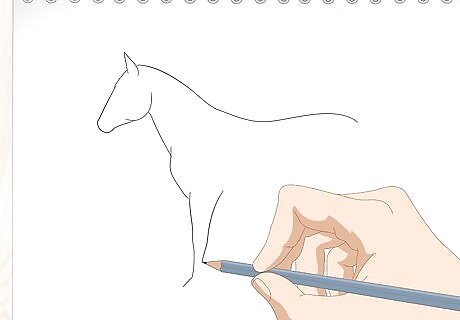
Make 2 lines extending down under the horse’s chest for the front leg. Start the first line where the horse’s chest ends and then draw a second line that is parallel to it. Make the lines about the same length as the horse’s chest and rump. Include a slight 30-degree bend in the lines near the center to give the impression of a knee joint.
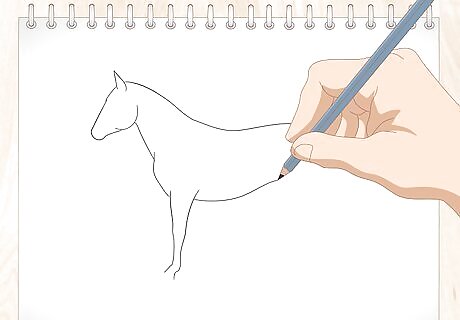
Create a curved line going under the horse for the belly. Make it as long as the horse’s back. Make the line curved enough so that the belly looks somewhat full, but not so full that it droops down past the horse's leg joints. Create a shape that looks like a wide, shallow bowl extending under the back of the horse. Tip: Draw a straight line for the belly instead of a curved line if you want to create a slimmer looking horse.
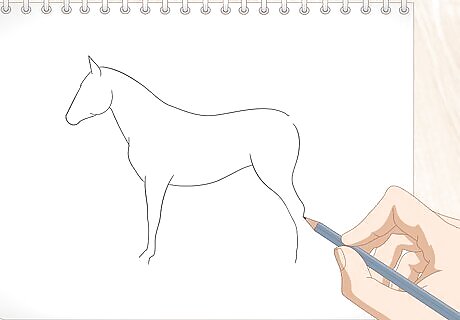
Draw 2 lines to form the horse’s back haunch and leg. Draw a curved line that starts about 0.5–1 in (1.3–2.5 cm) above the belly and then a second line extending down from the horse’s rump. Extend the lines so they are even with the bottom of the horse’s front legs. Make sure that the legs are bent at a 30-degree angle at the center with the knee joints facing forward.
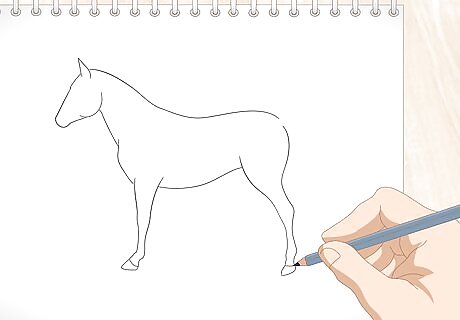
Add hooves to the bottom of the legs. Draw sideways pentagons or triangles extending out from the bottom of the legs. Make sure that the pointed ends of the shapes are facing forward. Imagine that the horse is wearing a small, pointy shoe as you draw this part. It won’t look like a realistic hoof, but it will give the impression of one. Another option is to simply draw small rectangles at the bottom of each of the horse’s legs. This is another easy way to create simple hooves.

Create a second leg and foot in the front and back. Position the second leg just behind the front leg and foot, and then do the same for the back leg and foot. Ensure that the second legs and feet are slightly ahead of the first ones you drew to give the horse’s body depth. Make sure that the legs have a little bend in them similar to the others you drew.
Adding Details
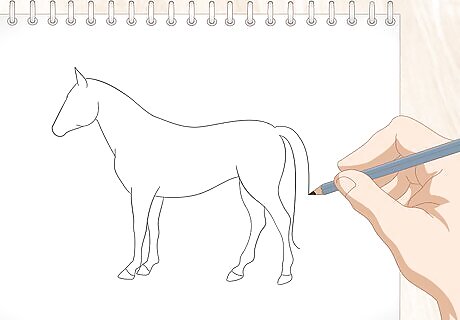
Outline the tail on the top of the rump. Create 2 parallel swooping lines extending from the top of the rump. You can make these as long as you like and space them as far apart as you want. Spacing them further apart will make for a fuller looking tail. As you near the ends of the swooping lines, bring them in towards each other to form a pointed end. Imagine the horses tail is blowing in the wind slightly and draw it extending out from the horse’s body, or keep it in close to the horse’s body to give the impression of stillness.
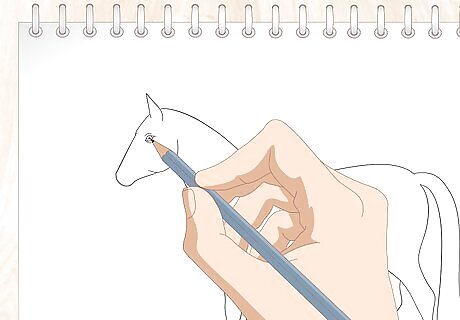
Make a circle with a dot in the center for an eye. Position the eye just under the ear on the side of the horse’s head. Then, create a thick dot at the center if you want the horse to be looking at you. Another option is to position the dot towards the front of the circle to give the impression that the horse is looking ahead.

Draw the mouth and nostril with a curved line and circle. Give the horse a simple smile with a curved line that extends from the front of its snout to about one-third of the way down it. Then, add a small circle or dot on the top edge of the snout near the end to indicate a nostril.Tip: If you want your horse to have a big, toothy smile, you can also draw a half crescent and then cross it with lines to give the impression of teeth.
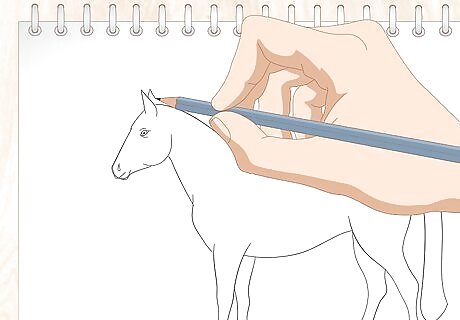
Add a second triangle slightly behind the first to create another ear. To make it seem like the horse’s other ear is partially hidden because you’re viewing it from the side, add a second triangle beside the first one. Position this triangle slightly in front of the first one, and end it about halfway down the side. Imagine the horse’s ears are 2 mountains side-by-side and you can only see about one-third of the back mountain.
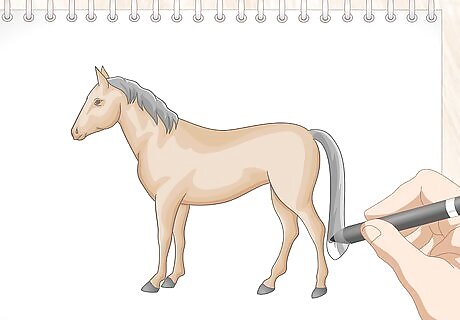
Outline and fill in the mane and tail with the desired color. Create a wavy or zigzagging line going all the way down the back of the horse’s neck. This will be its mane. You can also add a small tuft in front of its ears if you want. Then, color in the mane in whatever color you like. Fill in the tail with the same color. You can also color in the horse’s body in any color you want, such as brown, tan, black, white, or even an unconventional color, such as red, purple, or green. It’s your horse! Make it any color you want!
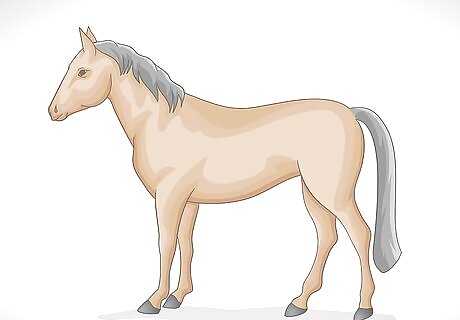
Finished.













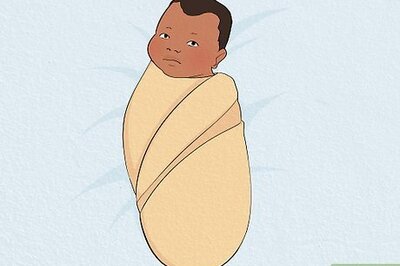

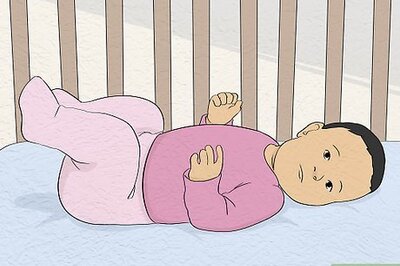

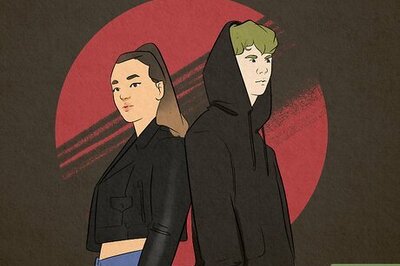
Comments
0 comment